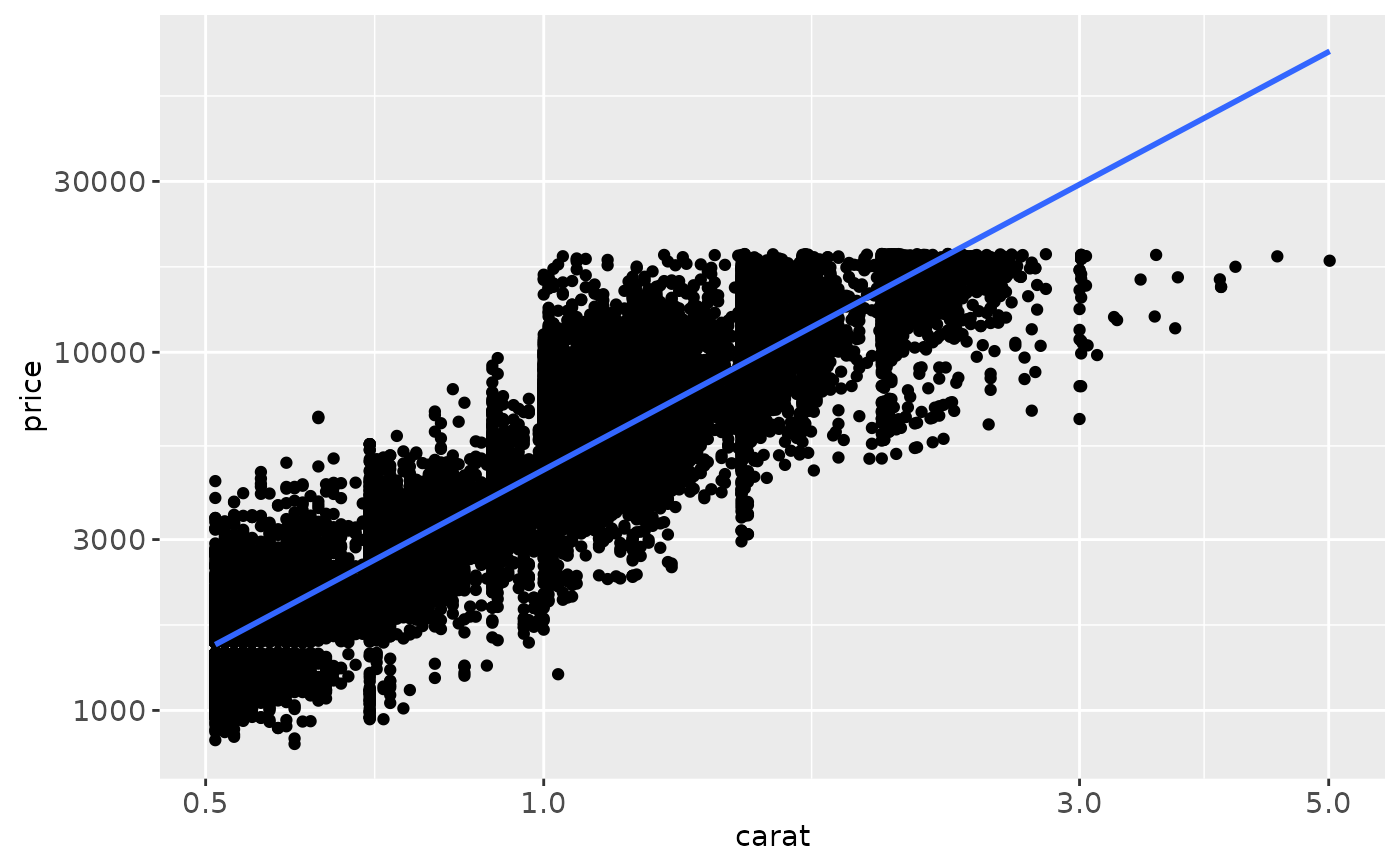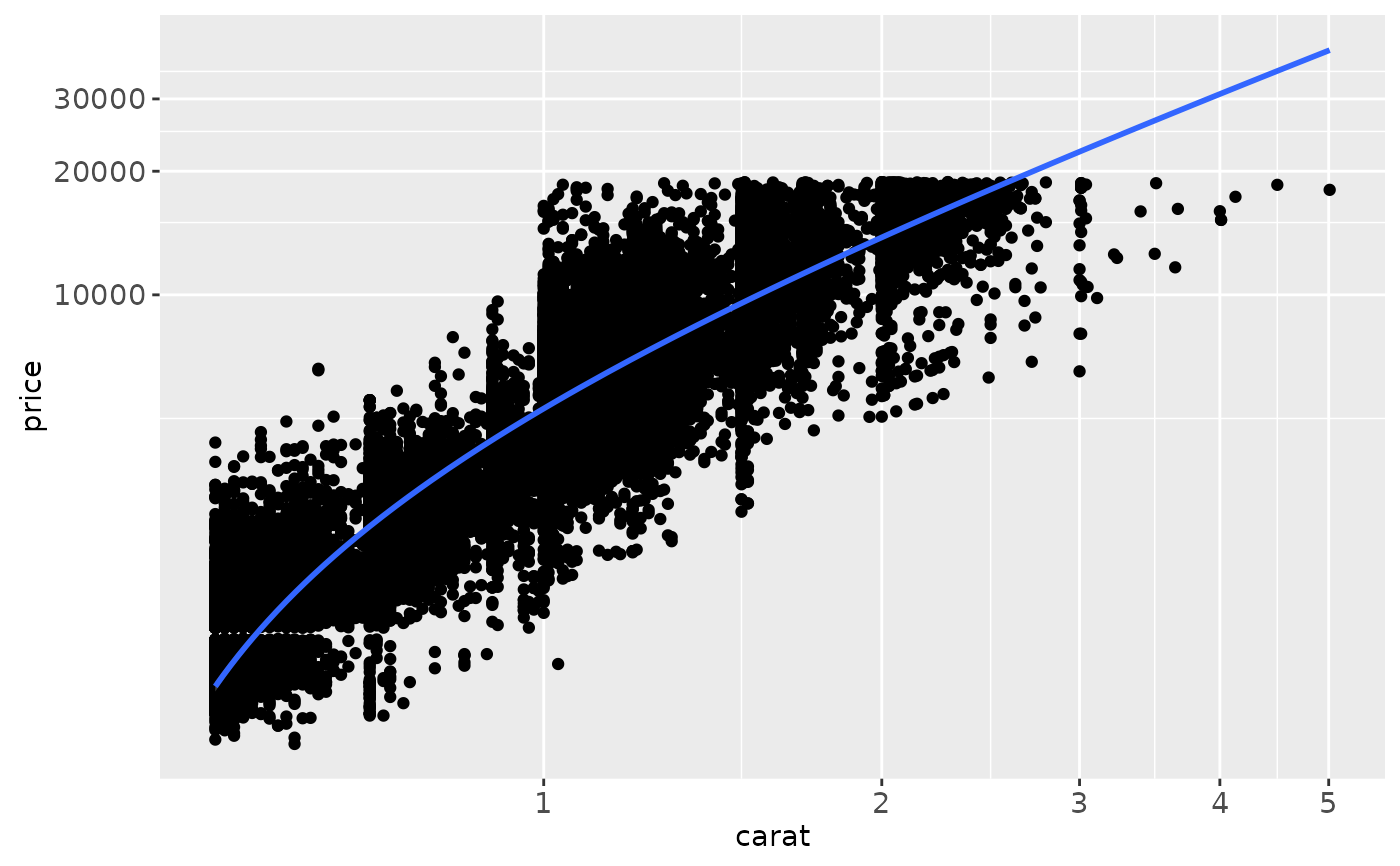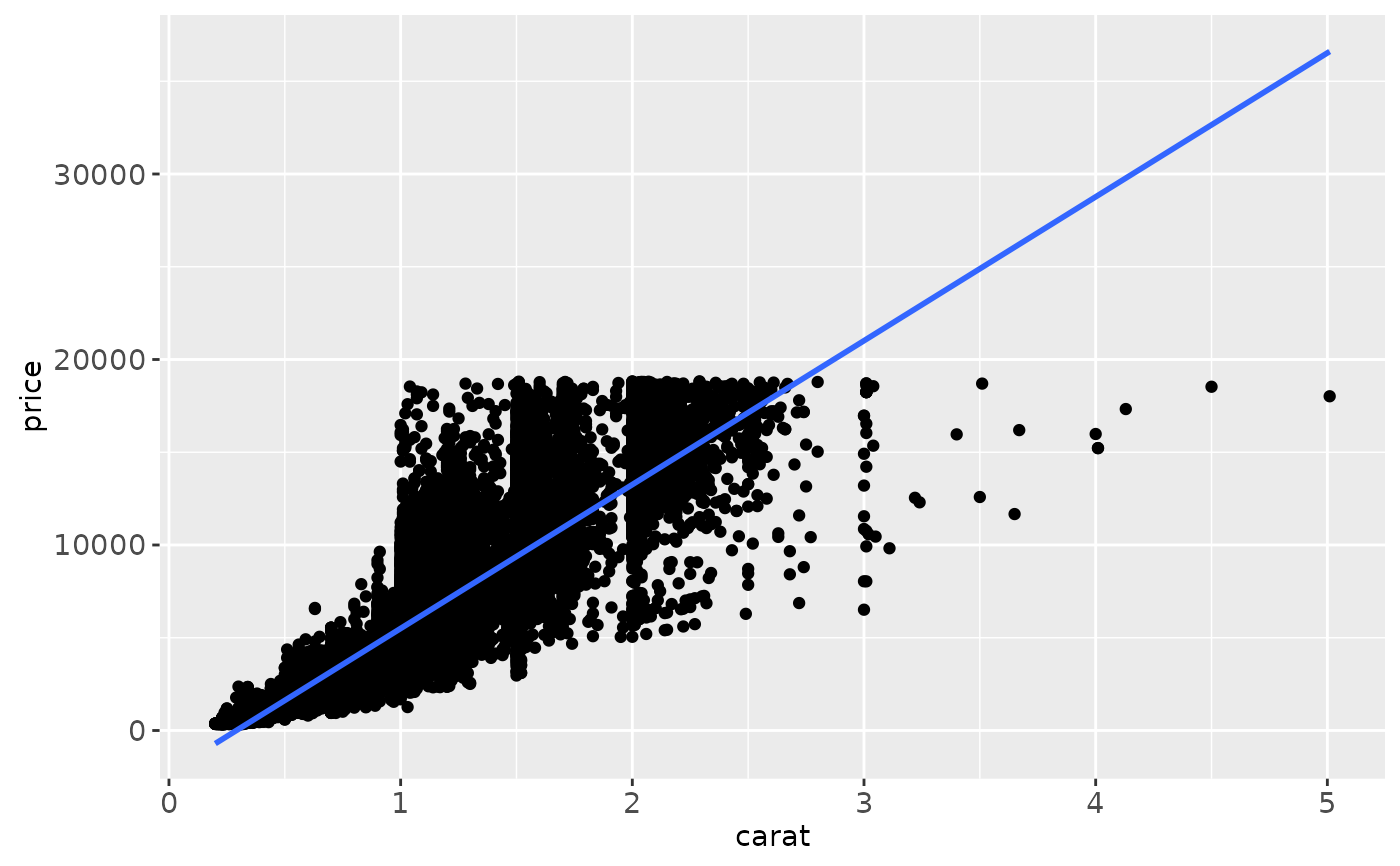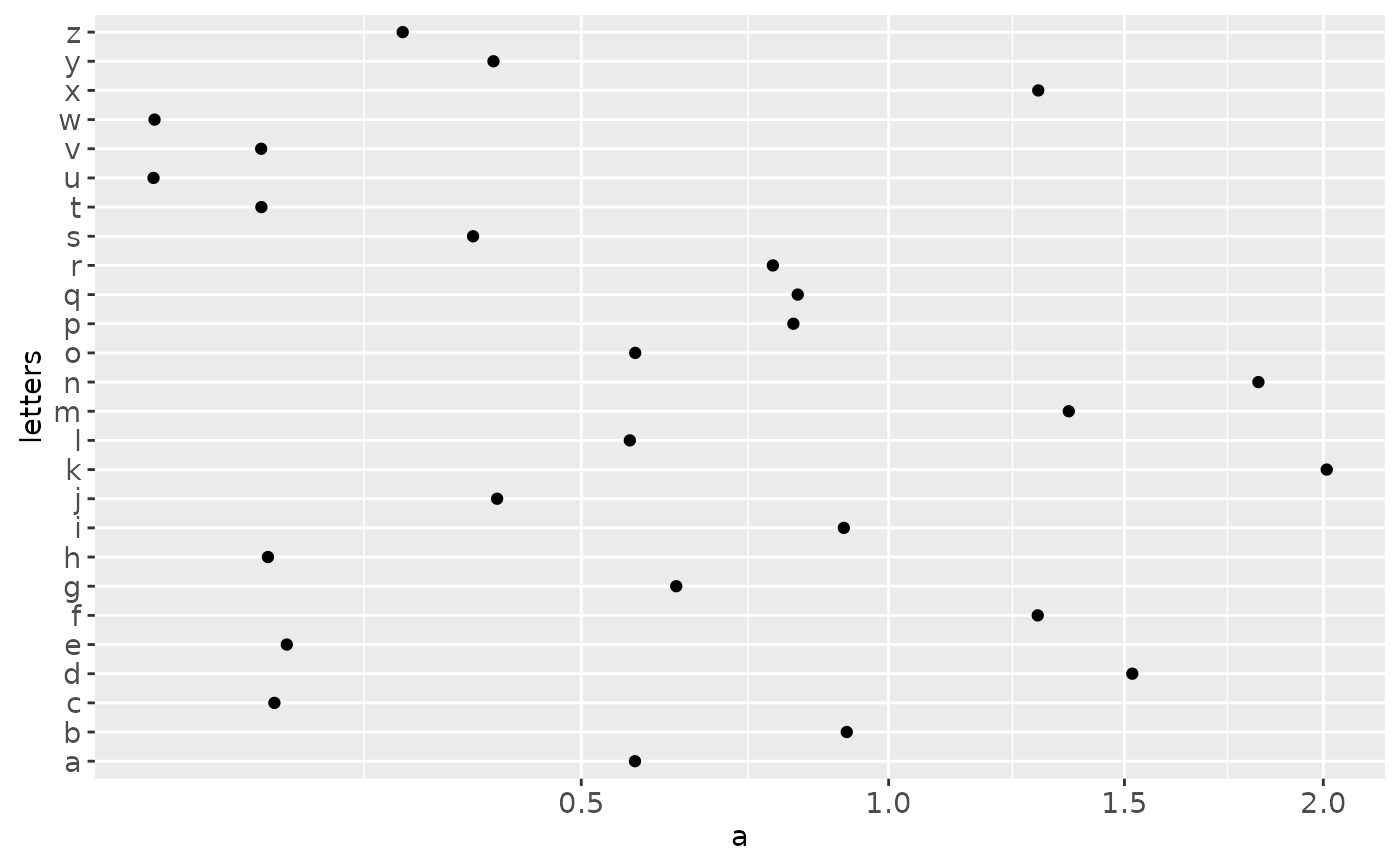coord_trans is different to scale transformations in that it occurs after
statistical transformation and will affect the visual appearance of geoms - there is
no guarantee that straight lines will continue to be straight.
Details
All current transformations only work with continuous values - see
trans_new for list of transformations, and instructions on
how to create your own.
Examples
# \donttest{
# Three ways of doing transformation in ggplot:
# * by transforming the data
ggplot(diamonds, aes(log10(carat), log10(price))) +
geom_point()
 # * by transforming the scales
ggplot(diamonds, aes(carat, price)) +
geom_point() +
scale_x_log10() +
scale_y_log10()
# * by transforming the scales
ggplot(diamonds, aes(carat, price)) +
geom_point() +
scale_x_log10() +
scale_y_log10()
 # * by transforming the coordinate system:
ggplot(diamonds, aes(carat, price)) +
geom_point() +
coord_trans(x = "log10", y = "log10")
# * by transforming the coordinate system:
ggplot(diamonds, aes(carat, price)) +
geom_point() +
coord_trans(x = "log10", y = "log10")
 # The difference between transforming the scales and
# transforming the coordinate system is that scale
# transformation occurs BEFORE statistics, and coordinate
# transformation afterwards. Coordinate transformation also
# changes the shape of geoms:
d <- subset(diamonds, carat > 0.5)
ggplot(d, aes(carat, price)) +
geom_point() +
geom_smooth(method = "lm") +
scale_x_log10() +
scale_y_log10()
# The difference between transforming the scales and
# transforming the coordinate system is that scale
# transformation occurs BEFORE statistics, and coordinate
# transformation afterwards. Coordinate transformation also
# changes the shape of geoms:
d <- subset(diamonds, carat > 0.5)
ggplot(d, aes(carat, price)) +
geom_point() +
geom_smooth(method = "lm") +
scale_x_log10() +
scale_y_log10()
 ggplot(d, aes(carat, price)) +
geom_point() +
geom_smooth(method = "lm") +
coord_trans(x = "log10", y = "log10")
ggplot(d, aes(carat, price)) +
geom_point() +
geom_smooth(method = "lm") +
coord_trans(x = "log10", y = "log10")
 # Here I used a subset of diamonds so that the smoothed line didn't
# drop below zero, which obviously causes problems on the log-transformed
# scale
# With a combination of scale and coordinate transformation, it's
# possible to do back-transformations:
ggplot(diamonds, aes(carat, price)) +
geom_point() +
geom_smooth(method = "lm") +
scale_x_log10() +
scale_y_log10() +
coord_trans(x = scales::exp_trans(10), y = scales::exp_trans(10))
# Here I used a subset of diamonds so that the smoothed line didn't
# drop below zero, which obviously causes problems on the log-transformed
# scale
# With a combination of scale and coordinate transformation, it's
# possible to do back-transformations:
ggplot(diamonds, aes(carat, price)) +
geom_point() +
geom_smooth(method = "lm") +
scale_x_log10() +
scale_y_log10() +
coord_trans(x = scales::exp_trans(10), y = scales::exp_trans(10))
 # cf.
ggplot(diamonds, aes(carat, price)) +
geom_point() +
geom_smooth(method = "lm")
# cf.
ggplot(diamonds, aes(carat, price)) +
geom_point() +
geom_smooth(method = "lm")
 # Also works with discrete scales
df <- data.frame(a = abs(rnorm(26)),letters)
plot <- ggplot(df,aes(a,letters)) + geom_point()
plot + coord_trans(x = "log10")
# Also works with discrete scales
df <- data.frame(a = abs(rnorm(26)),letters)
plot <- ggplot(df,aes(a,letters)) + geom_point()
plot + coord_trans(x = "log10")
 plot + coord_trans(x = "sqrt")
plot + coord_trans(x = "sqrt")
 # }
# }